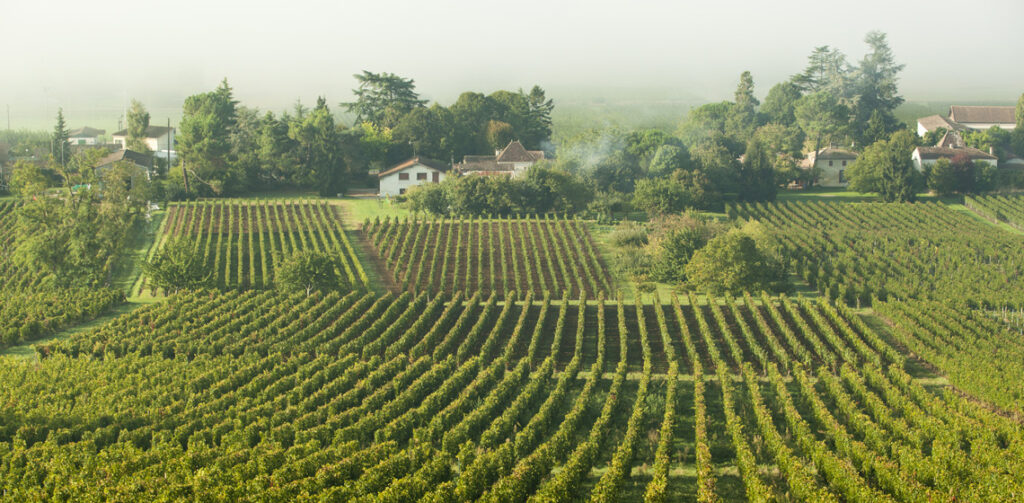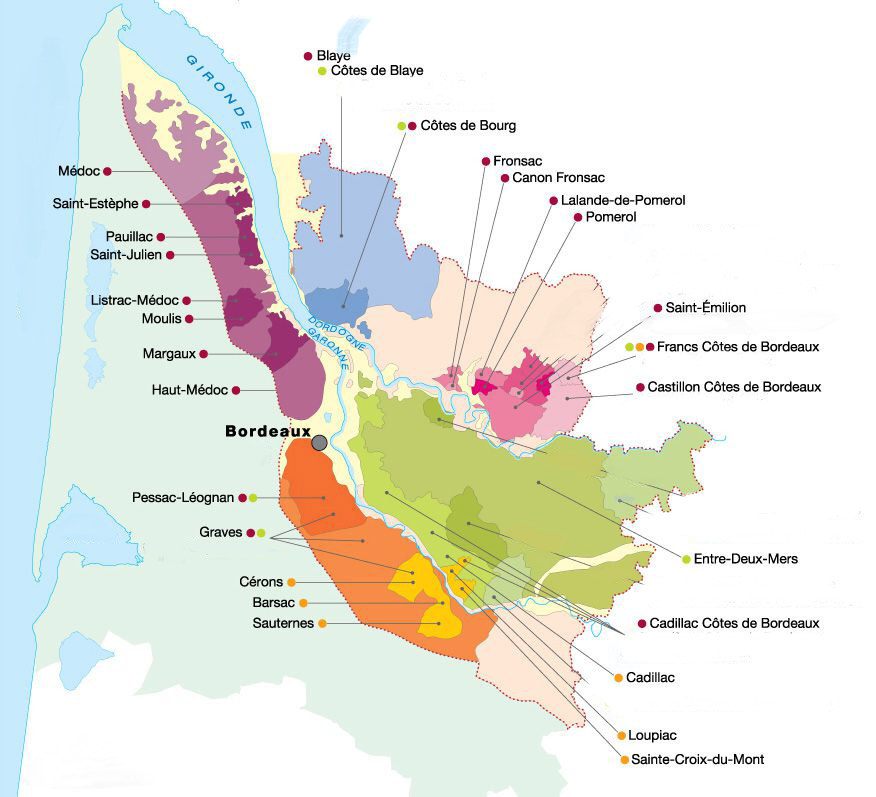
Everyone knows Bordeaux, right? After all, it's France's largest wine region, producing about 60 million bottles annually. Some of the finest, most age-worthy and most expensive wines in the world come from here. But Bordeaux can be complicated and, if you’re not careful, you can spend a lot of money for a mediocre wine. One secret to getting a really nice wine for good price is to look in relatively unknown areas, such as Castillon - Côtes de Bordeaux.
Let’s start with the “Côtes de Bordeaux” part. That’s largely a marketing ploy that groups together five disparate Right Bank appellations -- Blaye, Cadillac, Sainte-Foy, Francs and Castillon -- in the hope that they’ll all receive better market recognition. What these appellations have in common is that their wines are almost all red, made from a Merlot-predominant blend with lesser proportions of Cabernet Franc and Cabernet Sauvignon. But don’t be fooled into thinking that they’re all equal, because they’re not. Francs and Castillon are adjacent to St. Emilion and share a similar, high-quality terroir. The other three zones are geographically separated and have lesser terroirs.
Castillon - Côtes de Bordeaux is a high quality, reasonably priced red wine appellation. It’s essentially an extension of St. Emilion (see the map below), and its wines have a similar style but are less expensive. Many of the wineries are small and family owned. Historically, because Castillon wines fetched low prices, its vignerons lacked capital to invest in improving quality. In recent years St. Emilion growers have moved into the area, bringing money and expertise that has led to a dramatic increase in quality, although there are still some dull, fiercely tannic wines. While Castillon wines aren’t as cheap as they once were, they’re still relatively affordable.
- For history buffs, the appellation is named after the town of Castillon-la-Bataille, where a famous battle fought in 1453 brought an end to Hundred Years War and English occupation of Bordeaux. While the British may have retreated, they retained their love of Bordeaux wines and continued to play a major role in the wine trade.
- Interestingly, because Castillon has cooler soils than St. Emilion, its vineyards may fare better with higher temperatures associated with global climate change.
Our wine of the week is a 2016 Château Roquevielle Castillon - Côtes de Bordeaux (about $20 retail). It’s a blend of 70 percent Merlot, 15 percent Cabernet Franc and 15 percent Cabernet Sauvignon. The wine is aged for 12 months in new oak barrels, which imparts a pleasant, distinctive note. On the nose and palate, it has notes of red fruit, spice and a touch of vanilla. It’s a smooth, medium-bodied wine of moderate complexity, with pleasant tannins and a medium finish. This wine has a relatively low 13 percent alcohol level.
- This is a very good value; it compares favorably with much more expensive wines.
- You can drink it young or hold it for up to ten years. When young it needs an hour or so of decanting to allow it to develop.
- It should be enjoyed with food, and pairs well with beef and grilled meats. It also works great with aged Gruyère, Comté, Camembert, or Brie cheeses.
Cheers!

